
views
X
Research source
Sometimes it can be difficult to tell the difference between a badly sprained wrist and a bone fracture, so being well-informed should help you make the distinction. However, if you suspect a fracture for any reason, make an appointment with your doctor and get medical treatment.
Identifying Symptoms of a Sprained Wrist
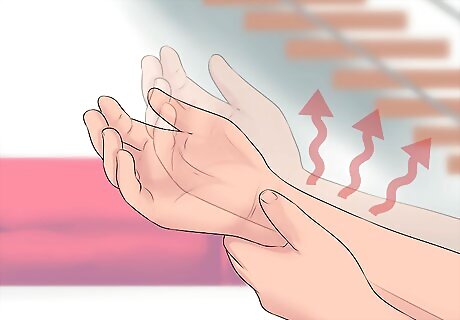
Expect some pain with movement. Wrist sprains have a wide range of severity depending on the degree of stretch and/or tearing to the involved ligament. Mild wrist sprains (Grade 1), involve some ligament stretching, but no significant tearing; moderate sprains (Grade 2) involve significant tearing (up to 50% of the fibers); severe sprains (Grade 3) involve a greater amount of tearing or complete rupture of the ligament. Consequently, with Grade 1 and 2 wrist sprains, movement will be relatively normal, albeit painful. A Grade 3 sprain often leads to joint instability (too much mobility) with movement because the involved ligament is no longer properly attached to its wrist (carpal) bones. In contrast, movement is typically much more restricted with wrist fractures and there's often a grinding feeling with movement. Grade 1 wrist sprains are mildly painful and the pain is usually described as a soreness that can be sharp with movement. Grade 2 wrist sprains generate moderate-to-severe pain, depending on the degree of tearing; the pain is sharper than a Grade 1 tear and sometimes also throbbing because of inflammation. Grade 3 wrist sprains are often less painful (initially) than Grade 2 varieties because the ligament is completely severed and not irritating surrounding nerves as much — although Grade 3 injuries eventually throb significantly due to accumulating inflammation.
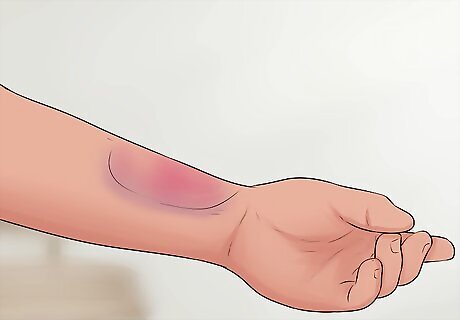
Look for inflammation. Inflammation (swelling) is a common symptom of all wrist sprains, as well as wrist fractures, but it varies significantly according to the severity of injury. In general, Grade 1 sprains have the least amount of swelling, whereas Grade 3 sprains trigger the most. Swelling will make your sprained wrist look thicker and puffy compared to your uninjured wrist. The body's inflammation response to injury, especially sprains, tends to be an over-reaction because it's anticipating the worst care scenario — an open wound susceptible to infection. As such, trying to limit inflammation triggered by a sprain with cold therapy, compresses, and/or anti-inflammatory drugs is beneficial because it reduces pain and helps to maintain range of motion in your wrist. Swelling from inflammation doesn't cause much color change to skin, aside from some redness from "flushing" due to all the warm fluid underneath the skin. Due to the accumulation of inflammation, which consists of lymph fluid and a variety of specialized immune system cells, a sprained wrist will feel warm to the touch. Most wrist fractures also feel warm due to inflammation, but sometimes the wrist and hand can feel cold because the circulation gets cut off due to blood vessel damage.
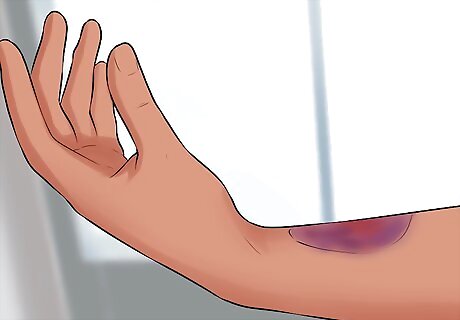
See if bruising develops. Although the body's inflammation reaction creates swelling at the site of injury, that's not the same as bruising. Instead, bruising is caused by blood that seeps into surrounding tissues from injured blood vessels (small arteries or veins). Grade 1 wrist sprains usually don't lead to bruising, unless the injury was from a hard blow that crushed the small subcutaneous blood vessels directly underneath the skin. Grade 2 sprains involve more swelling, but again, not necessarily lots of bruising — it depends how the injury occurred. Grade 3 sprains involve lots of swelling and typically significant bruising because trauma that causes a completely torn ligament is usually severe enough to also rip or damage surrounding blood vessels. The dark color of bruising is caused by blood seeping into the tissues just below the skin's surface. As the blood degrades and gets flushed out of the tissue, the bruise changes color with time (dark blue, green, then yellow). In contrast to sprains, wrist fractures almost always exhibit bruising because it takes more trauma (force) to break a bone. A Grade 3 wrist sprain can lead to an avulsion fracture, where the ligament tears away a small chip of bone. In this case, there's lots of immediate pain, inflammation and bruising.
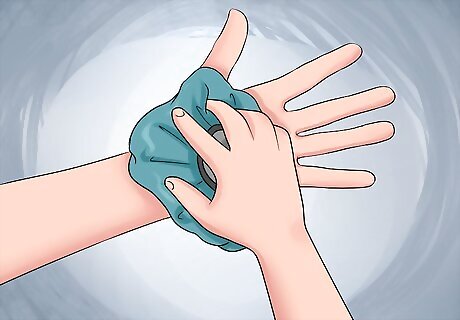
Apply ice and notice any improvement. Wrist sprains of all grades respond well to cold therapy because it reduces inflammation and numbs surrounding nerve fibers that generate pain. Cold therapy (ice or frozen gel packs) is especially important for Grade 2 and 3 wrist sprains because they trigger the accumulation of more inflammation around the injury site. Applying cold therapy to a sprained wrist for 10-15 minutes every one to two hours immediately following an injury makes a noticeably positive impact after a day or two by significantly reducing the intensity of pain and making movement easier. In contrast, icing a wrist fracture is helpful for pain and inflammation control also, but the symptoms often return after the effects wear off. Thus, as a general guideline, cold therapy tends to be more impactful on sprains than it is on most fractures. Small hairline (stress) fractures tend to mimic Grade 1 or 2 sprains and do respond to cold therapy (long term) better than more serious fractures. When applying cold therapy to your inured wrist, make sure to wrap it in a thin towel so as to avoid skin irritation or frost bite.
Seeking a Medical Diagnosis
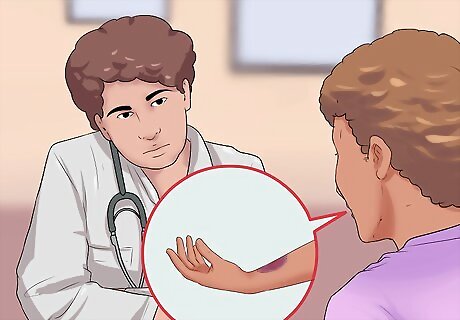
Consult with your family physician. Although the above information can help you understand if your wrist is sprained and roughly gauge to what extent, your doctor is much more qualified to make an accurate diagnosis. In fact, a detailed history leads to a specific diagnosis in about 70% of wrist pain cases. Your doctor will examine your wrist and perform some orthopedic tests on it, and if the injury appears severe, they will likely send you for a wrist x-ray to rule out a fractured bone. X-rays only show bones, however, and not soft tissues such as ligaments, tendons, blood vessels, or nerves. Broken carpal bones, particularly hairline fractures, can be tricky to see on x-ray because of their small size and the confined space. If the x-rays are negative for a wrist fracture, but your injury is severe and in need of surgery, the doctor might send you for an MRI or CT scan. Small stress fractures of carpal bones (particularly the scaphoid bone) are very difficult to see on regular x-rays until all the inflammation fades away. Thus, you may have to wait a week or so to get another x-ray. These types of injuries may also require additional imaging such as MRI or splinting/casting depending on severity of symptoms and mechanism of injury. Osteoporosis (a condition characterized by demineralization and brittle bones) is a significant risk factor for wrist fractures, although it doesn't increase the risk of wrist sprains.

Get a referral for an MRI. For all Grade 1 wrist sprains and most Grade 2 sprains, there's no need for an MRI or other high-tech diagnostic test because the injuries are short-lived and tend to heal within a few weeks without any medical treatment. However, for more serious ligament sprains (especially Grade 3 varieties) or if the diagnosis remains unclear, then magnetic resonance imaging (MRI) is warranted. An MRI uses magnetic waves to provide detailed images of all structures within the body, including soft tissues. MRI is great for visualizing which ligament is badly torn and to what extent. This is very helpful information for an orthopedic surgeon if surgery is required. Tendinitis, ruptured tendons and bursitis of the wrist (including carpal tunnel syndrome) mimic wrist sprains, but an MRI can distinguish between the different injuries. An MRI is also helpful to see the extent of blood vessel and nerve damage, particularly if your wrist injury is causing symptoms in your hand, such as numbness, tingling and/or loss of normal color. Another cause of wrist pain that can mimic a low-grade sprain is osteoarthritis — the wear and tear type. However, osteoarthritis pain is chronic, gets slowly worse over time and typically involves a grinding feeling with wrist movement.

Consider a CT scan. If your wrist injury is pretty severe (and not improving) and the diagnosis remains unclear after x-rays and an MRI, then further imaging modalities such as a CT scan are indicated. Computerized tomography (CT) scans combine x-ray images taken from different angles and use computer processing to create cross-sectional images (slices) of all hard and soft tissues inside your body. CT images provide more detailed information than regular x-rays, but similar levels of detail to MRI images. In general, CT is excellent for evaluating hidden fractures of the wrist, although MRI tends to be better for evaluating more subtle ligament and tendon injuries. However, CT scans are typically less expensive than MRI, so this may be a factor if your health insurance won't cover costs of diagnosis. CT scans expose you to ionizing radiation. The amount of radiation is more than plain x-rays, but not enough to be considered harmful. The most common ligament sprained in the wrist is the scapho-lunate ligament, which connects the scaphoid bone to the lunate bone. If all the above mentioned diagnostic imaging results are negative, but your severe wrist pain persists, then your doctor will likely refer you to an orthopedic (bone and joint) specialist for more testing and evaluation.


















Comments
0 comment